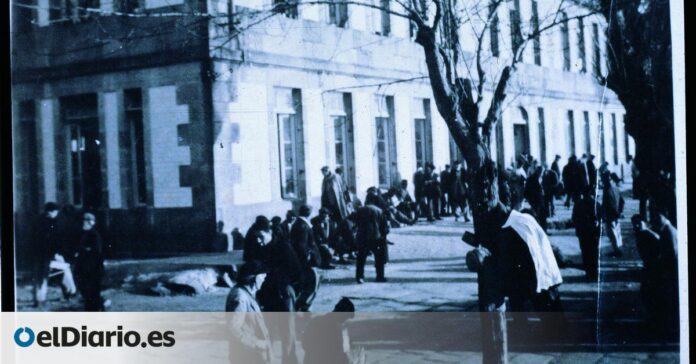At least 463 people died after passing through Franco’s concentration camp on San Simón Island at the mouth of the Vigo estuary. 8, from Asturias and Leona Another field at the mouth of the Minho,shot. The bag contains an unspecified number of items. walk More than 400 people died due to the extreme conditions there and the abuse of security personnel. Everyone had a name and a surname, and he registered them name and voice projectwhich was activated by the Sunta de Galicia in 2006 after an agreement with the University of Santiago and synthesized by the historian Dionisio Pereira. The People’s Party declared at its parliamentary headquarters on Wednesday that it was “not aware of any fatalities” in San Simon.
“This is a minimal number, only deaths confirmed through records, oral history or bibliographic sources,” Pereira warned in a conversation with elDiario.es. Furious after hearing about the intervention of popular deputy José Luis Ferro Iglesias, he wrote a short entry on his social networks: Franco’s criminal prison system today), and also because “several bags of prisoners were found dead in different parts of the province of Pontevedra.” The Nomes e Voces project was the clearest and most systematic effort to outline the nature, intensity, and victims of the first Franco regime’s repression in Galicia.
From 1936 to 1943, Francoists imprisoned approximately 6,000 Democrats and Republicans on San Simon, two islets measuring 250 meters wide and 84 meters long. They managed to overcrowd it to about 1,000 prisoners at the same time. Diseases such as typhus fever and red intestine were common. Pereira explains how the Voces e Nomes database allows us to know the ages, occupations, and places of birth of the dead in San Simón. “Those who died on the island due to feeding conditions or diseases were primarily elderly people, especially those from other regions such as Castile-La Mancha, Extremadura, and Andalusia.” That is common. It was a habit Francoist concentration camp world moving prisoners away from their place of origin;
“There were a number of prisoners who drowned while trying to escape, including CNT sailor Manuel Sayar Oleran,” the anarchist history expert explained, later adding, “The situation was dire. As a result, the island’s mortality rate increased “dramatically” starting in 1939.” ranch and extreme moisture conditions. ” In the summer of 1941, researchers Gonzalo Amoedo and Roberto Gil Mouret wrote: Episodes of terrorism during the civil war in Pontevedra (Xerais, 2007), where 250 people died. “We’re at a rate of 10 or 12 cases per day,” Pereira said. Vigo’s city council, whose bodies are buried in Pereiro’s municipal cemetery, has asked the city of Redondela, the municipality to which Mr. San Simón belongs, to allow the establishment of a new cemetery because it cannot accommodate the overflowing cemetery.
All this evidence and documentary evidence, published in academic studies, historical essays, or popular works, is what José Luis Ferro Iglesias, an agent of the PP, claims is evidence “concerning the deaths on the island of San Simón.” This did not prevent us from guaranteeing that it does not exist. Ferro Iglesias reduced what happened on the scene, it will be proclaimed as a memory of democracy by central government At the request of the storage groupto “abuse by the prison warden at the time.” His name is Fernando Lago Bua, butcher In the words of the historian Emilio Grandio, “a reference figure for the brutal repression of the Galician rebels”, his first chief, San Simón, was in charge of the rebels themselves against the Republic in January 1937. was shot dead by. they made accusations. He is accused of facilitating a dark extortion scheme against inmates, but the details of the incident and those involved remain subject to debate.
Digna Rivas, the socialist mayor of Redondera, will use the persona of Ferro Iglesias at the next city plenary session, citing the “attack on democratic values and coexistence” and the lack of “historical truth” of Franco’s concentration camps.・We are planning to propose a declaration of non-grata status. Members of Parliament from the Socialist Party and the BNG, who took part in the debate where the popular figure spoke, also attacked what had happened. Nationalist Luis Barra said: “It is an insult never before expressed in Congress for the hundreds of people who died on the island of San Simon, who were taken from the island to be killed and shot. ” demanded a retraction of the statement. Not only did he not get it, but PP Congressional President Julio García Comesaña also retracted his statement.
















